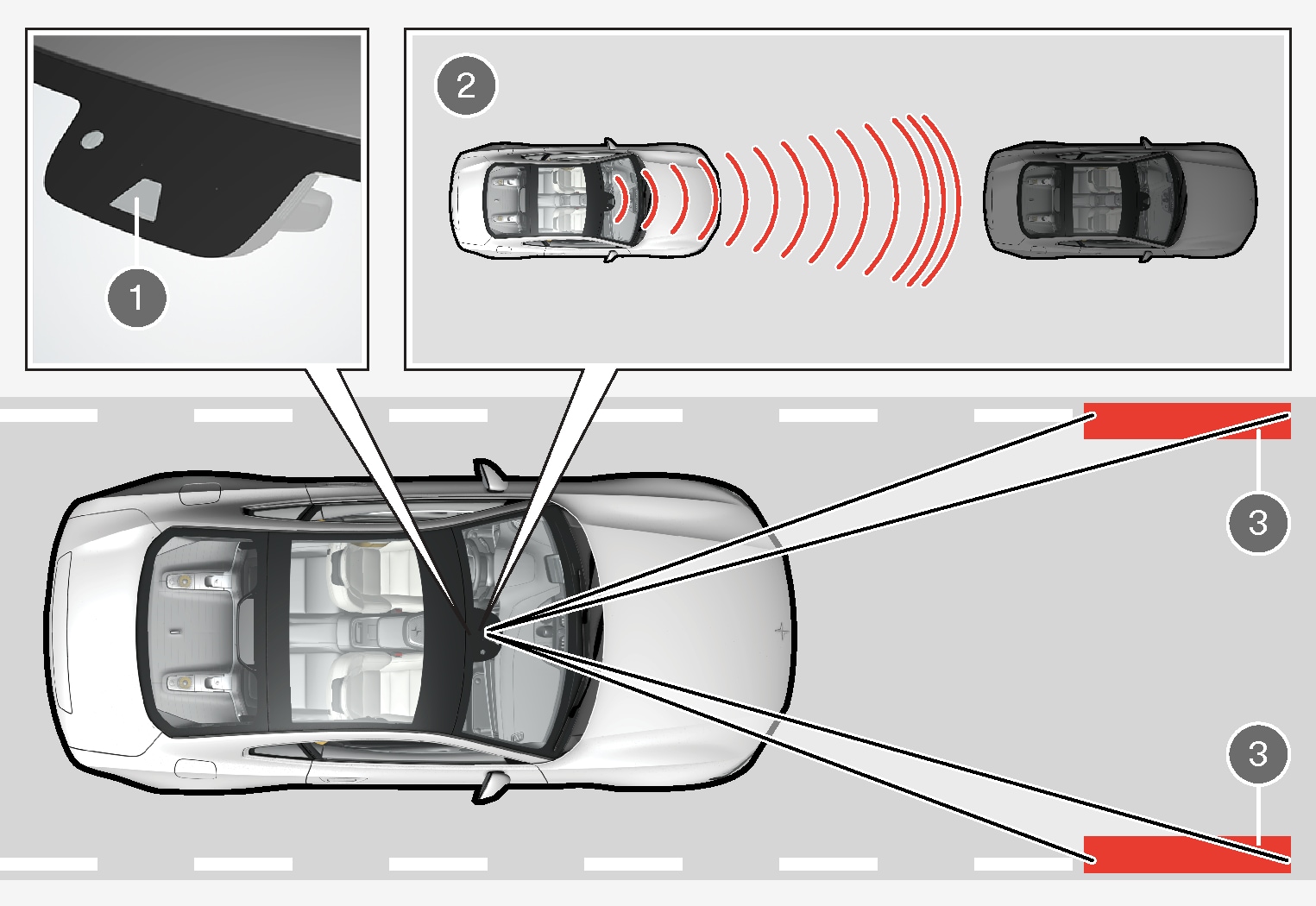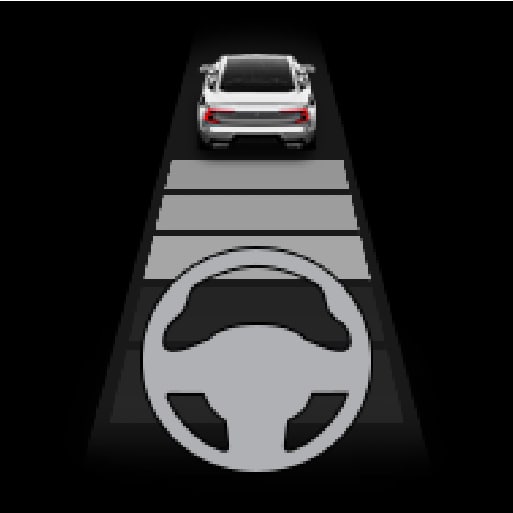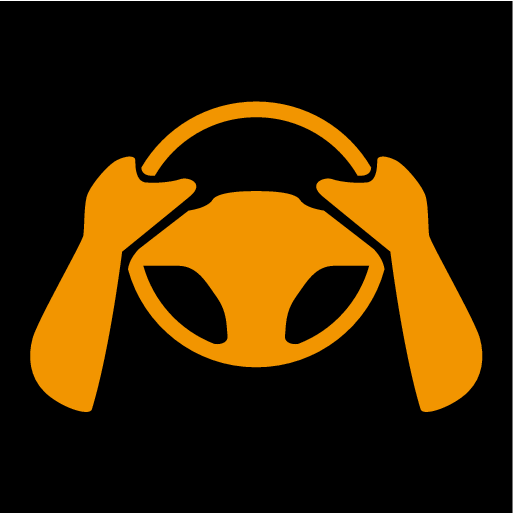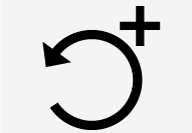Pilot Assist*1

 Camera and radar unit
Camera and radar unit Reading the distance
Reading the distance Reading lane markings
Reading lane markings
Get to know Pilot Assist
Pilot Assist helps to steer the car and you may need to drive a few miles with Pilot Assist before you feel entirely comfortable with the function. It is important to be aware of all the applications and limitations of this function so that you can use all its benefits safely.
The Pilot Assist function is primarily intended for use on motorways and similar major roads where it can contribute to more comfortable driving and a more relaxed driving experience.
The driver selects the desired speed and a time interval to the vehicle ahead. Pilot Assist scans the distance to the vehicle ahead and the lane's side markings on the road surface using the camera and radar unit. The preset time interval is maintained with automatic speed adjustment whilst the steering assistance helps to position the car in the lane.
Pilot Assist regulates the speed with acceleration and braking. It is normal for the brakes to emit a low sound when they are being used to adjust the speed.
- regulate the speed smoothly. In situations that demand sudden braking the driver must brake himself/herself. This applies in cases of large speed differences or if the car in front brakes suddenly. Due to the limitations of the camera and radar unit, braking may come unexpectedly or not at all.
- follow the vehicle ahead in the same lane at a time interval set by the driver. If the radar unit cannot see any vehicle in front then the car will instead maintain the speed set and stored by the driver. This also takes place if the speed of the vehicle ahead increases and exceeds the stored speed.
The position of the car in the lane
When Pilot Assist helps to steer, it attempts to place your car halfway between the visible lane markings. For a smoother drive, it is a good idea to allow the car to find a good position. The driver can always adjust the position him/herself by increasing the steering input. It is important for the driver to make sure the car is positioned safely in the lane.
If Pilot Assist does not position the car in an appropriate way in the lane, it is recommended to turn Pilot Assist off or switch to Adaptive cruise control*.
Steering assistance

The current status of steering assistance is indicated by the steering wheel symbol:
• Illuminated steering wheel indicates active steering assistance.
• Extinguished steering wheel (as in illustration) indicates deactivated steering assistance.
Pilot Assist steering assistance takes into account the speed of the preceding car and the lane markings. The driver can at any time ignore the Pilot Assist steering recommendation and steer in another direction, e.g. to change lane or avoid an obstruction on the road. In this case, resistance is felt in the steering wheel as long as steering assistance is active.
If Pilot Assist is unable to interpret the lane clearly, e.g. if the camera and radar unit is unable to see the side markings for the lane, Pilot Assist temporarily disables steering assistance while speed and distance regulation functions remain active. Steering assistance is resumed when the lane can be interpreted again. The steering wheel vibrates slightly when deactivated temporarily in order to alert the driver to the change.
Warning
Round bends and when the road splits
Pilot Assist interacts with the driver, who should therefore not wait for the steering assistance from Pilot Assist but should always be prepared to increase his/her own steering input, especially in bends.
When the car approaches an exit or if the lane splits, the driver should steer towards the desired lane so that Pilot Assist must detect the desired direction.
Hands on the steering wheel
In order for Pilot Assist to function, the driver’s hands must be on the steering wheel. It is important for the driver always to carry on being active and alert when driving as Pilot Assist is unable to read all situations and may toggle between off and on without prior warning.

If Pilot Assist detects that the driver is not keeping his/her hands on the steering wheel, the system provides a warning by means of a symbol and text message in the driver display to encourage the driver to actively steer the car.
If the driver's hands still cannot be detected on the steering wheel after a few seconds, the prompt to actively steer the car is repeated, supplemented by an audible signal.
If Pilot Assist cannot detect the driver's hands on the steering wheel after a further few seconds, the audible signal becomes intensive and the steering function is deactivated. Pilot Assist must then be restarted using the steering wheel button  .
.
Warning
- The function is supplementary driver support intended to facilitate driving and make it safer – it cannot handle all situations in all traffic, weather and road conditions.
- The driver is advised to read all sections in the Manual that relate to this function to learn about factors such as its limitations and what the driver should be aware of before using the system.
- Driver support functions are not a substitute for the driver's attention and judgement. The driver is always responsible for ensuring the car is driven in a safe manner, at the appropriate speed, with an appropriate distance to other vehicles, and in accordance with current traffic rules and regulations.